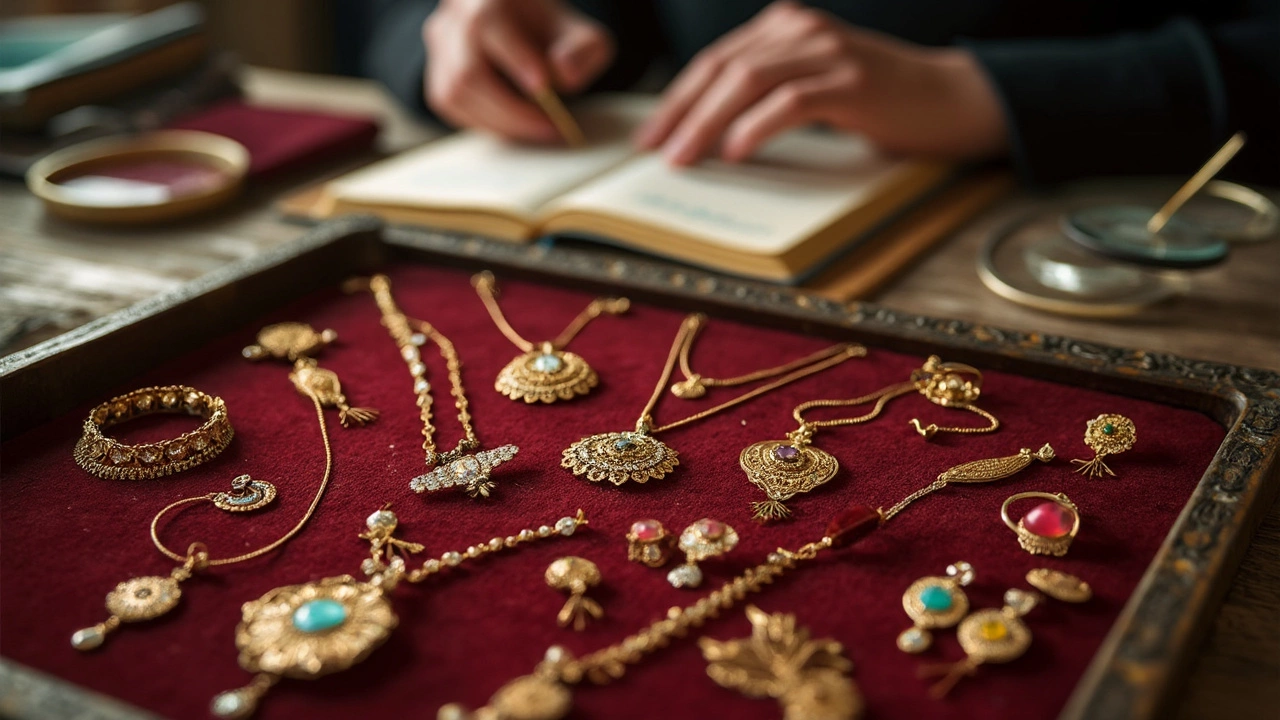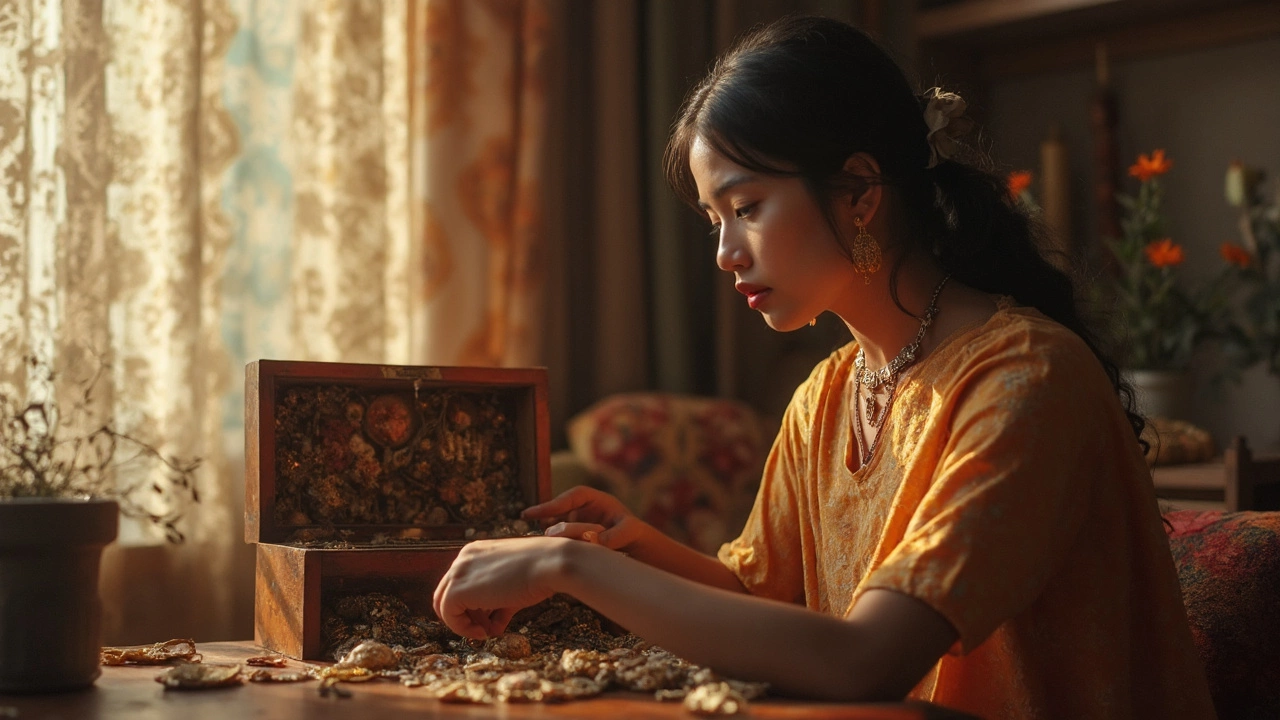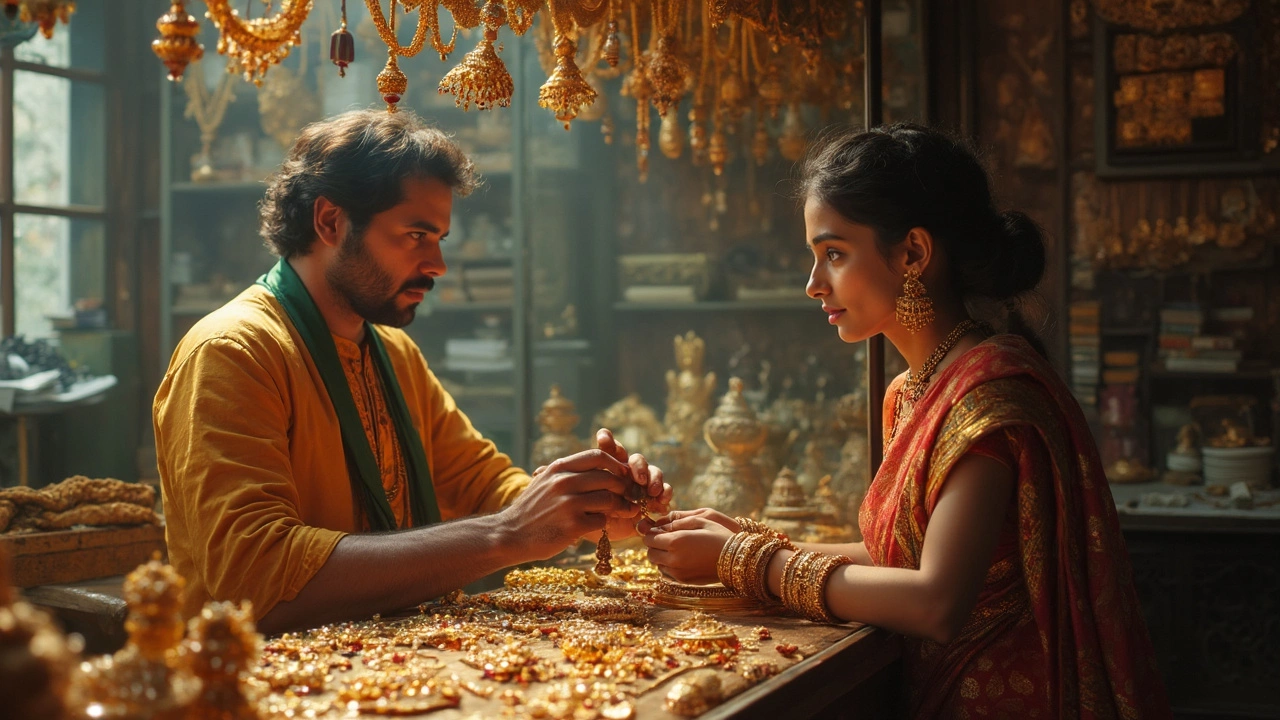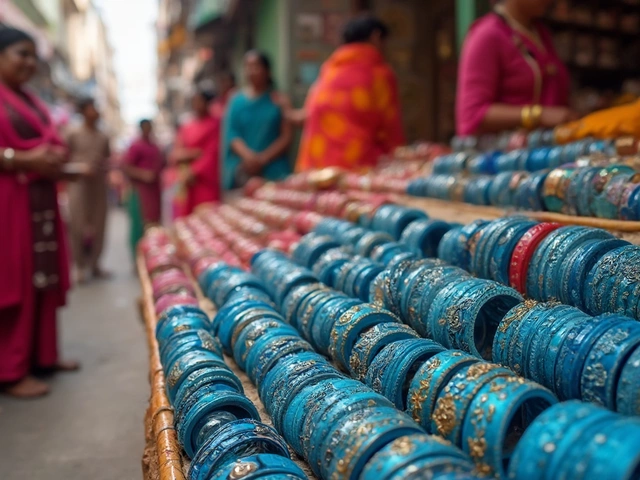Take a look at any pawn shop counter, and you’ll usually spot the same types of jewelry right at the front: old-school rings, eye-catching necklaces, chunky bracelets, and those quirky brooches that somehow never go out of style. But here’s the real deal—not all antique jewelry is treated the same. Some pieces fly off the shelf, while others just gather dust under the glass.
If you’ve got a stash of old jewelry—maybe inherited from a relative or picked up at a flea market—you probably want to know which pieces will actually fetch you a decent price. I’m talking about stuff like Victorian gold rings, Art Deco necklaces, and bracelets with a story. These aren’t just pretty; collectors and regulars hunting for something unique are always on the lookout for them.
Pawn shop owners aren’t just looking at the shiny parts either. They care about eras, design details, gemstones, marks, and even the condition of your piece. Knowing what makes a piece valuable can give you a real edge when it comes to negotiating—or at least making sure you don’t get lowballed. If you want to clear that jewelry box and actually get something worthwhile in return, it pays to know what’s hot at the counter right now.
- Classic Antique Rings That Always Sell
- Popular Vintage Necklaces and Pendants
- Brooches and Pins: Style and Value
- Bracelets Buyers Love
- Tips for Selling Antique Jewelry at Pawn Shops
Classic Antique Rings That Always Sell
Walk into any pawn shop and ask which antique jewelry pieces get the most attention, and rings will almost always top the list. There’s something about slipping an old ring onto your finger that just never goes out of style. But not all old rings move fast; a few specific types always attract buyers and serious collectors looking for deals.
Victorian-era gold rings, mostly dating from the mid-1800s, are especially hot sellers. The unique designs, hand-engraved details, and natural gemstones score big points. Pawn shop guys know that anything Victorian with opal or garnet gets people talking. Alongside them, Art Deco rings—think geometric shapes and bold colors from the 1920s—have a steady following, mostly because they’re rare and look cool even by today’s standards. Cushion-cut diamonds, sapphires set with platinum, or filigree bands from this time period catch eyes right away. I’ve seen buyers haggle for hours over these at my local shop.
But why do pawn shops pay a premium for classic rings? Design periods matter a lot. Here’s how the most popular styles stack up on the counter:
| Ring Era | Typical Materials | What Sells Best |
|---|---|---|
| Victorian (1837-1901) | Gold, opal, garnet, pearls | Hand-carved, intricate bands, clusters |
| Art Deco (1920s-1930s) | Platinum, diamonds, sapphires | Geometric, filigree, bold stones |
| Edwardian (1901-1915) | Platinum, diamonds, pearls | Delicate, lace-like filigree, floral motifs |
| Retro (1940s) | Rose gold, rubies, aquamarine | Chunky, dramatic, statement pieces |
If you see these styles in your jewelry box, you’re in luck. A 2023 resale market report showed that antique rings hit up to 70% of their old retail value at pawn shops—if the condition’s good and the stones are original. Avoid cleaning these rings too aggressively; patina counts as part of the charm. And don’t toss out those rings with worn bands or missing stones. Even flawed pieces can sell well if they’re from a sought-after era or have engravings with dates, maker’s marks, or family crests.
The bottom line: when it comes to pawn shop jewelry, classic antique rings with clear history and recognizable style almost always find a buyer—and usually for more than you’d guess.
Popular Vintage Necklaces and Pendants
Walk into any pawn shop and you’ll see that vintage necklaces and pendants have their own loyal fanbase. Certain styles just don’t sit in the display for long, and they almost always bring in higher offers than modern costume jewelry. The secret? Design, rarity, and a dash of nostalgia.
The most pawn shop jewelry buyers chase are usually from big eras—Georgian, Victorian, Edwardian, and Art Deco stand out. For example, a genuine Art Deco platinum pendant, especially with real diamonds or sapphires, can get snapped up in days. Victorian lockets, particularly those with intricate enamel or hairwork details, have a steady crowd and can command high prices when well-preserved.
If we’re talking pendants, cameo necklaces lead the pack. Those that are hand-carved, especially on shell or hardstone, sell much faster than mass-produced versions. Also, look out for signed pieces from designers like Tiffany & Co., Cartier, or Trifari—pawn shops love recognizing these names, and you’ll probably get offered more if you have one of these tucked away.
- Georgian necklaces (1714–1837): Look for handmade chains, unusual gems like garnet or topaz, and closed-back settings.
- Victorian lockets and collar necklaces (1837–1901): Enamel, pearls, and sentimental engravings are a good sign.
- Art Nouveau pendants (1890–1910): These usually feature flowing lines, natural shapes, and sometimes colorful plique-à-jour enamel work.
- Art Deco neckpieces (1920–1935): Bold shapes, geometric patterns, and diamonds or sapphires are common favorites.
You may be surprised, but even a necklace made with semi-precious stones can move quickly if it has a unique design or an unusual clasp. Market data from the National Pawnbrokers Association in 2024 showed that vintage necklaces with original marks or documents sold for up to 35% more than unmarked ones. Here’s a quick breakdown of what sells best and their typical resale bump at pawn shops:
| Type | Era/Designer | Value Increase (%) |
|---|---|---|
| Art Deco Diamond Pendant | 1920–1935 | +40% |
| Victorian Gold Locket | 1837–1901 | +30% |
| Signed Designer Piece | Tiffany & Co., Cartier | +50% |
| Cameo Necklace | Hand-carved | +25% |
One quick tip: before bringing your vintage necklace to a pawn shop, gently clean it (but don’t attempt repairs unless you’re experienced). Any original boxes, paperwork, or old receipts you can dig up could help you negotiate a better deal. If you’re unsure about age or maker, try checking for hallmarks or signatures—those little marks do most of the talking at the counter.

Brooches and Pins: Style and Value
Brooches and pins don’t always get the spotlight, but when you walk into a pawn shop with a well-made antique, dealers often perk up. These pieces aren’t just “grandma’s jewelry.” Genuine antique brooches and collectible pins sell fast because they’re small, easy for shops to move, and often packed with style you just can’t find in today’s jewelry stores.
Some of the hottest items in this category are Victorian mourning brooches (usually holding a little piece of hair or a painted portrait), Art Nouveau pins with their swirly, nature-inspired designs, and mid-1900s enamel or gemstone pieces. Brooches from famous makers like Tiffany & Co., Georg Jensen, or even unsigned but clearly well-crafted pins carry a lot more value than your average store-bought trinket. Pawn shop owners know collectors will pay serious money for pins that are rare, still have the original clasp, or feature unique materials like seed pearls, moonstones, or fine gemstones.
Want the numbers? Here’s a quick look at typical price ranges for popular brooch styles sold at pawn shops in the last year:
| Style | Era | Typical Pawn Shop Price |
|---|---|---|
| Victorian Mourning Brooch | 1800s | $80–$250 |
| Art Deco Gemstone Pin | 1920s–1930s | $150–$500 |
| Art Nouveau Enamel Brooch | 1890s–1910s | $120–$400 |
| Sterling Silver Scandinavian Pin | 1940s–1960s | $60–$180 |
| Designer Pieces (Tiffany, Jensen) | 1900s–1960s | $300–$1200 |
A few quick tips before you sell:
- Check the back for maker’s marks or hallmarks—these can bump the value way up.
- Leave any patina or natural aging on the metal alone; harsh cleaning can actually lower the price.
- Bring original boxes or paperwork if you have them—these are catnip for collectors and make your piece easier to sell for a better offer.
If you want to get solid cash for your brooch at the pawn shop jewelry counter, focus on age, maker, condition, and any extra details like rare stones or clever mechanics (think moving parts or secret compartments). Dealers know what’s rare and what’s just costume jewelry. Going in with a little knowledge means you walk out happier with your deal.
Bracelets Buyers Love
Walk into a pawn shop with an antique bracelet, and you’ll find out fast: some styles grab attention and others get ignored. Charm bracelets dating from the mid-20th century, for example, almost always generate interest. Each charm tells a little story, and collectors love tracking down complete sets, especially those from popular makers like Tiffany & Co. or Cartier.
Another crowd-pleaser? Art Deco bangles from the 1920s and 1930s. These have a bold look—think geometric shapes and flashy stones. Buyers know these pieces aren’t easy to replace, so they’re valued highly. Pawn shops also see a steady demand for Victorian-era gold bracelets, especially if they still have their original lockets or engravings.
“Antique bracelets with original clasps, maker’s marks, or personalized touches can sell for up to 35% more than unmarked pieces,” according to jewelry appraiser Erica Weiner.
Shoppers are especially drawn to bracelets with:
- Hallmarks or stamps showing authenticity.
- Natural gemstones (not glass or synthetic).
- Unique designs—like Edwardian filigree or chunky Retro Modern styles.
- Original packaging or paperwork.
Here’s how different types stack up in terms of average resale value at pawn shops (data from 2024 industry reports):
| Type of Bracelet | Average Resale Value (USD) |
|---|---|
| Art Deco Platinum/Diamond | $1,500 - $2,800 |
| Victorian Gold (with locket) | $800 - $2,000 |
| Mid-century Charm Bracelet | $400 - $1,200 |
| Modern Gold (10k/14k) | $250 - $600 |
If you want a quick sale and the best offer, make sure your pawn shop jewelry is clean and tangle-free. Bring any paperwork or receipts you’ve got. Even that old velvet box in the back of your closet can swing a deal in your favor.

Tips for Selling Antique Jewelry at Pawn Shops
If you want the best price for your antique jewelry, there are a few things you should absolutely do before heading out to your local pawn shop. People often get less than they deserve just because they skip some easy prep or don’t know what buyers care about.
First, clean your jewelry gently. Pawn shop buyers see dirty pieces all day, and a sparkling ring or necklace instantly gets more attention. Use a soft toothbrush and mild soap for gold and most gemstones. Skip toothpaste or anything abrasive—scratches kill value faster than you think.
- Get your jewelry appraised if it seems unusual or contains precious stones. Certified appraisals usually cost money, but if your piece is rare, it’ll pay off. Even a free online estimate can give you some leverage.
- Bring proof of authenticity if you have it. Vintage Tiffany & Co. or signed Art Deco pieces are worth a ton more with the original box or papers. No papers? Take good photos of any hallmarks or maker’s marks—you can point these out at the counter.
- Know the scrap value, but don’t stop there. Pawn shops pay based on weight and gold content for basic pieces, but rare designs and stones should bump the price up. Sites like Kitco update gold and silver prices every day—check those right before you sell.
Here’s a quick reference on what pawn shops paid (on average) for antique jewelry in the past year:
| Type | Average % Of Retail Price Paid | Notes |
|---|---|---|
| Victorian Gold Rings | 40-55% | Higher if signed or with gemstones |
| Art Deco Necklaces | 35-50% | Original designs fetch more |
| Diamond Brooches | 40-60% | Condition matters most |
| Gold Bracelets | 50-65% | Scrap value sets the floor |
When you’re ready to haggle, don’t be shy. Most shop owners expect to negotiate, especially if you seem confident and know your stuff. On a personal note, Rhea once got an extra 15% above a shop’s first offer, just because she’d pulled up auction results for the same piece on her phone. Small details make a difference, and a little research goes a long way.
Finally, pawn shop jewelry buyers love stories. If you know where your piece came from or have any cool trivia, share it—sometimes provenance is worth as much as the metal or stones. Bring your pieces in during weekdays, when the store isn’t packed and staff have more time to chat. You just might walk out with extra cash in your pocket.



